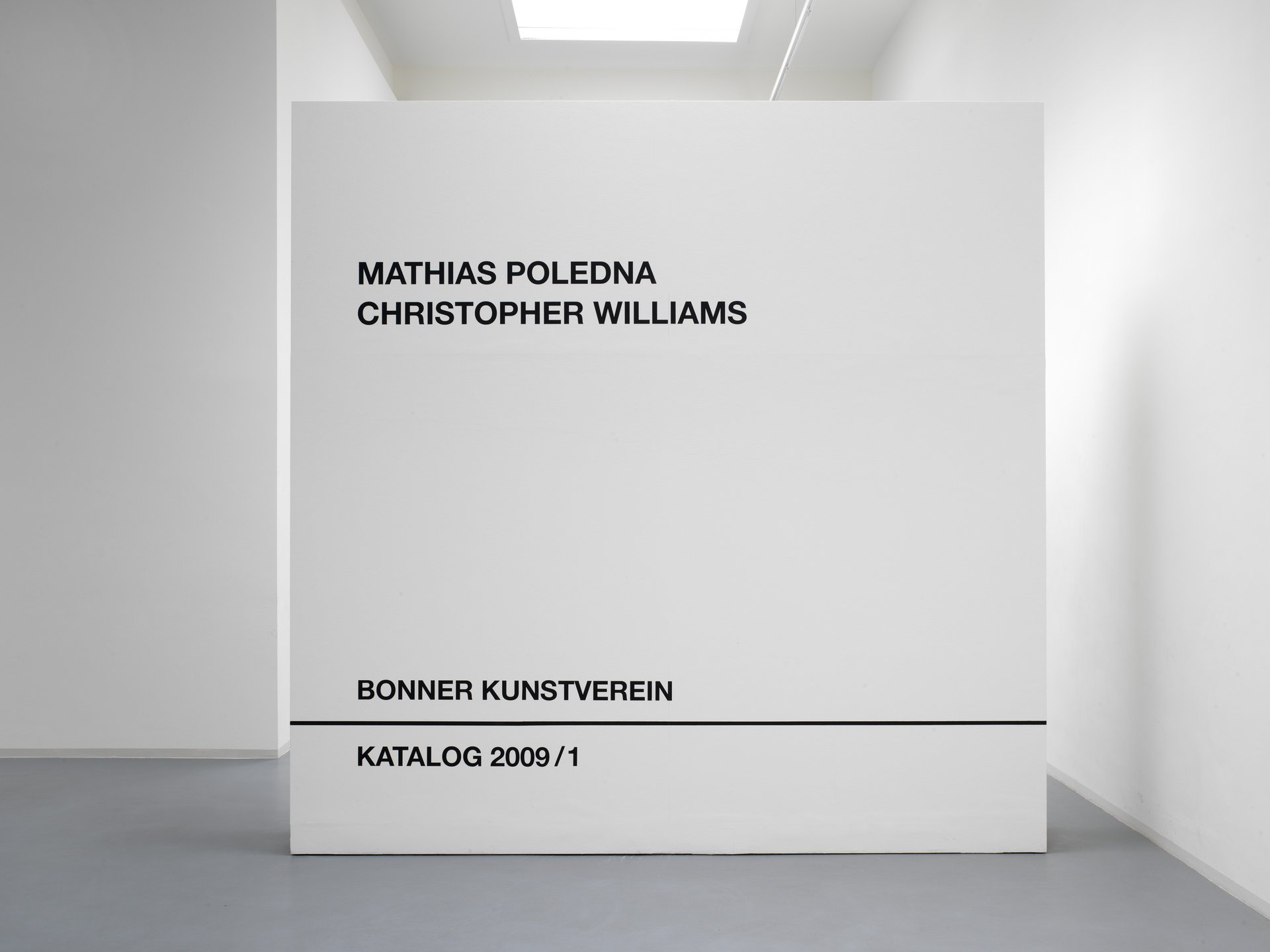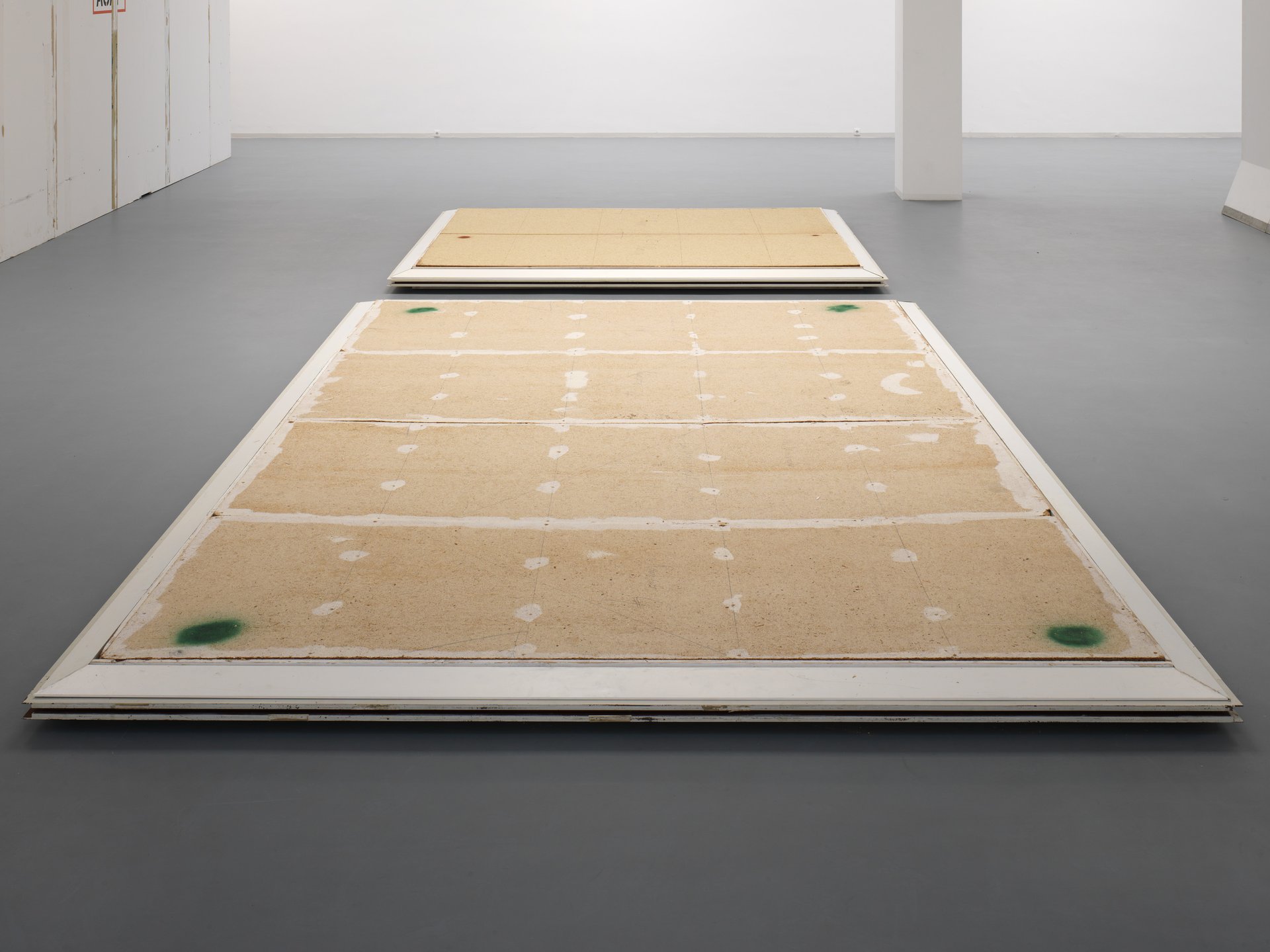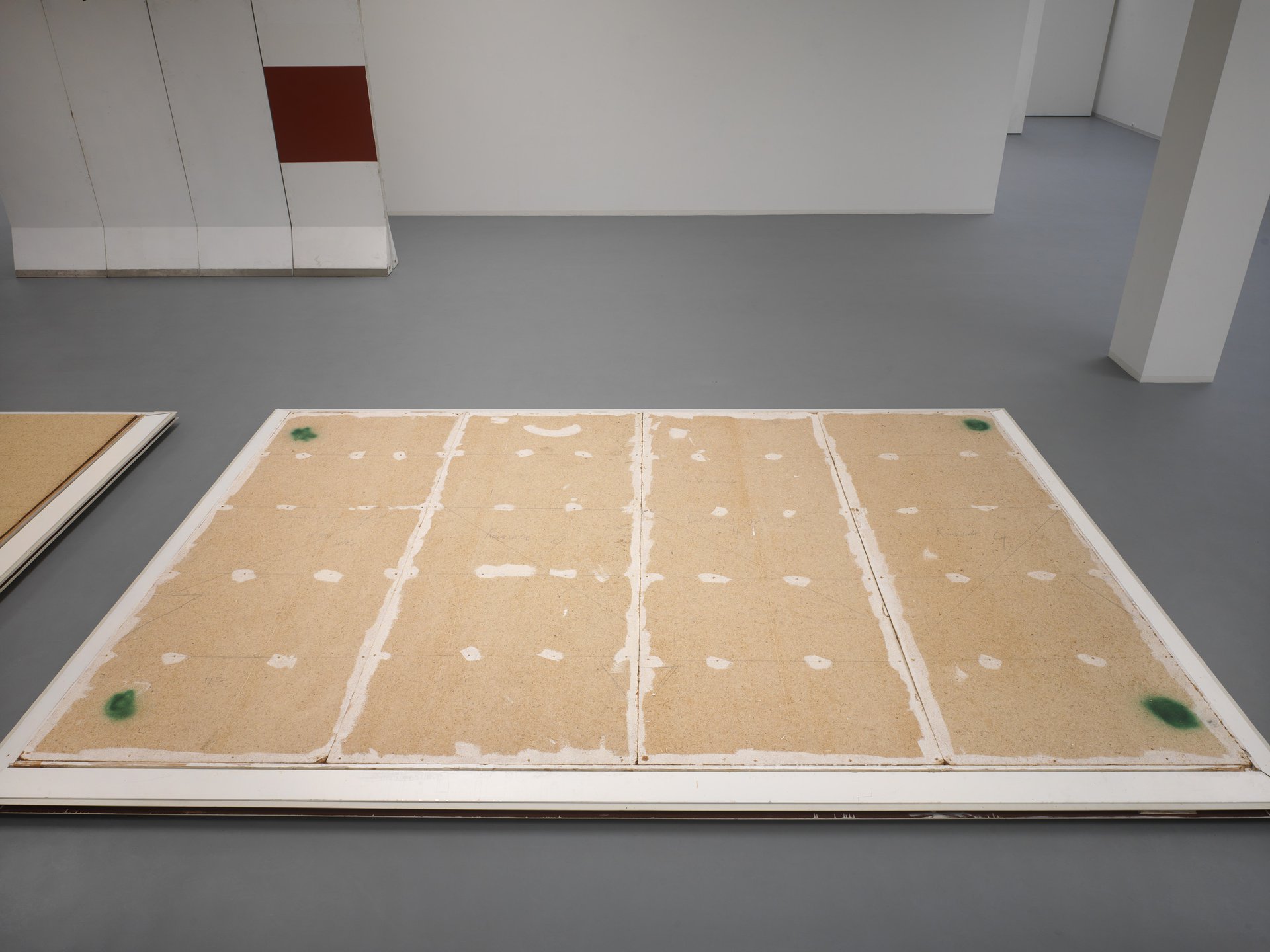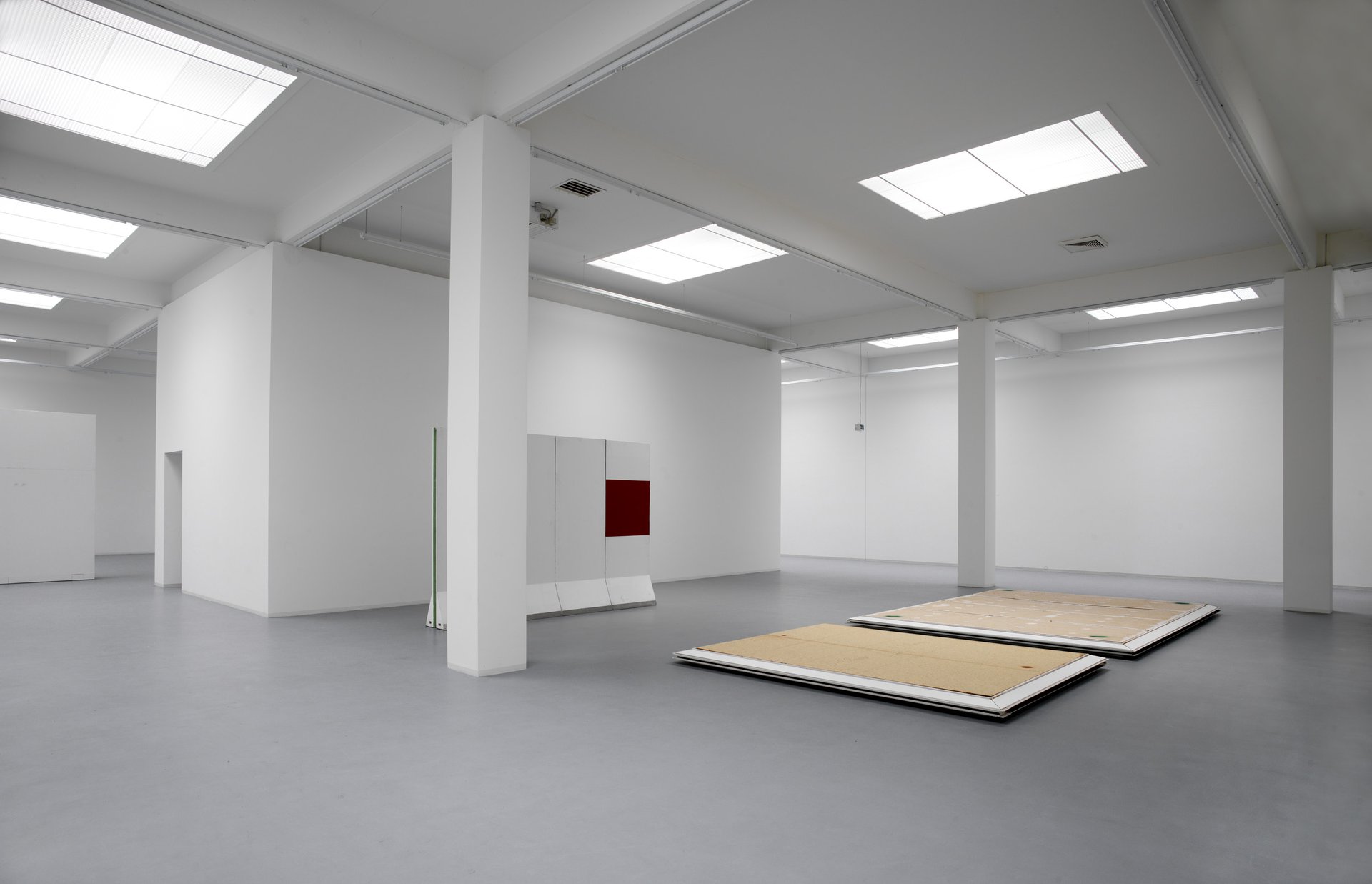Mathias Poledna / Christopher Williams
February 7 – April 26, 2009
"The wall is not the lowest common denominator in the works of Mathias Poledna and Christopher Williams. They overlap and meet in their respective mode of image production. But their relation to the wall on which a photograph is hung, a film is projected or which simply divides or defines the room is a crucial aspect of both their works. The conceptual self-image of the sixties and early seventies saw the wall as an essential element of a showroom’s “framing”, putting its architectural, social institutional and economic conditions on display. The shift from work to context was elementary for that generation’s artists, and the gesture of steering the attention towards the framework of exhibiting itself could even mean abandonment of the artwork within that framework. Here, however, the frame and the artwork exist only in exchange with each other, and it is this relationship which turns the work into a piece of art. The work’s individual aspects become accessible, from subject matter through photographic mode, framing and presentation in strings of reference, in which the walls of the room are only one of many elements. In isolating the walls as one of these elements, the flow from work to context is reversed. Not only because the walls, when on display, take on sculptural and pictorial qualities, but because the context is inseparably tied to the work by the string of references. At the same time the walls don’t directly index the social conditions the way they only could through the historically specific gesture of the work’s absence. Instead they point to the archival-typological and, for that reason, historical conditions of exhibiting itself. The absence of pictures in this exhibition in no way signifies further abandonment of the picture. Even though the images cannot be seen, their presence remains palpable. The conceptual connection between image and frame, work and context, however, is loosened. Only through this opening, the walls themselves can be read as historically shaped images." Helmut Draxler, 2009

Mathias Poledna, Christopher Williams, Installation view, Bonner Kunstverein, 2009. Photo Achim Kukulies

Mathias Poledna, Christopher Williams, Installation view, Bonner Kunstverein, 2009. Photo Achim Kukulies

Mathias Poledna, Christopher Williams, Installation view, Bonner Kunstverein, 2009. Photo Achim Kukulies

Mathias Poledna, Christopher Williams, Installation view, Bonner Kunstverein, 2009. Photo Achim Kukulies

Mathias Poledna, Christopher Williams, Installation view, Bonner Kunstverein, 2009. Photo Achim Kukulies

Mathias Poledna, Christopher Williams, Installation view, Bonner Kunstverein, 2009. Photo Achim Kukulies